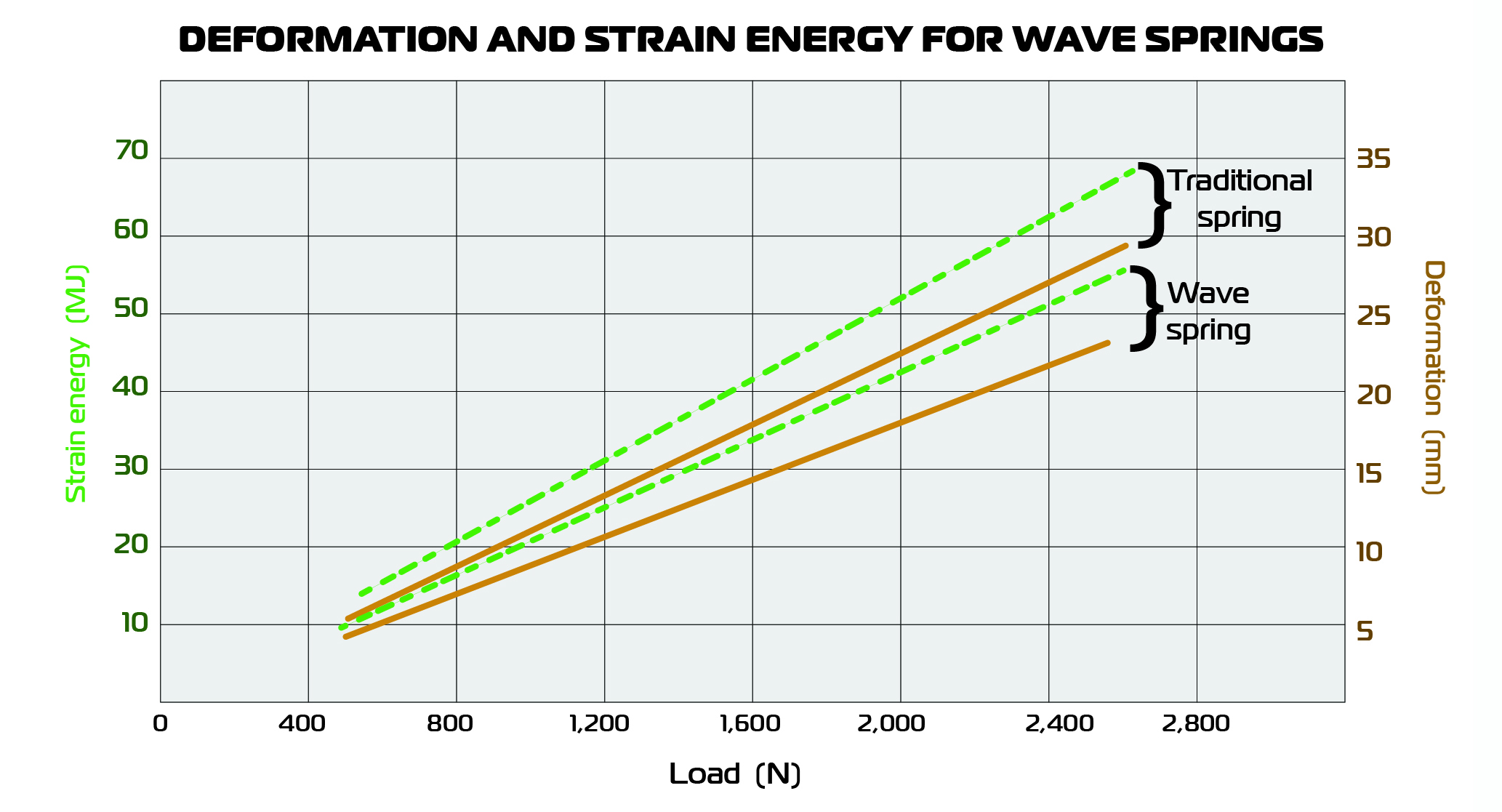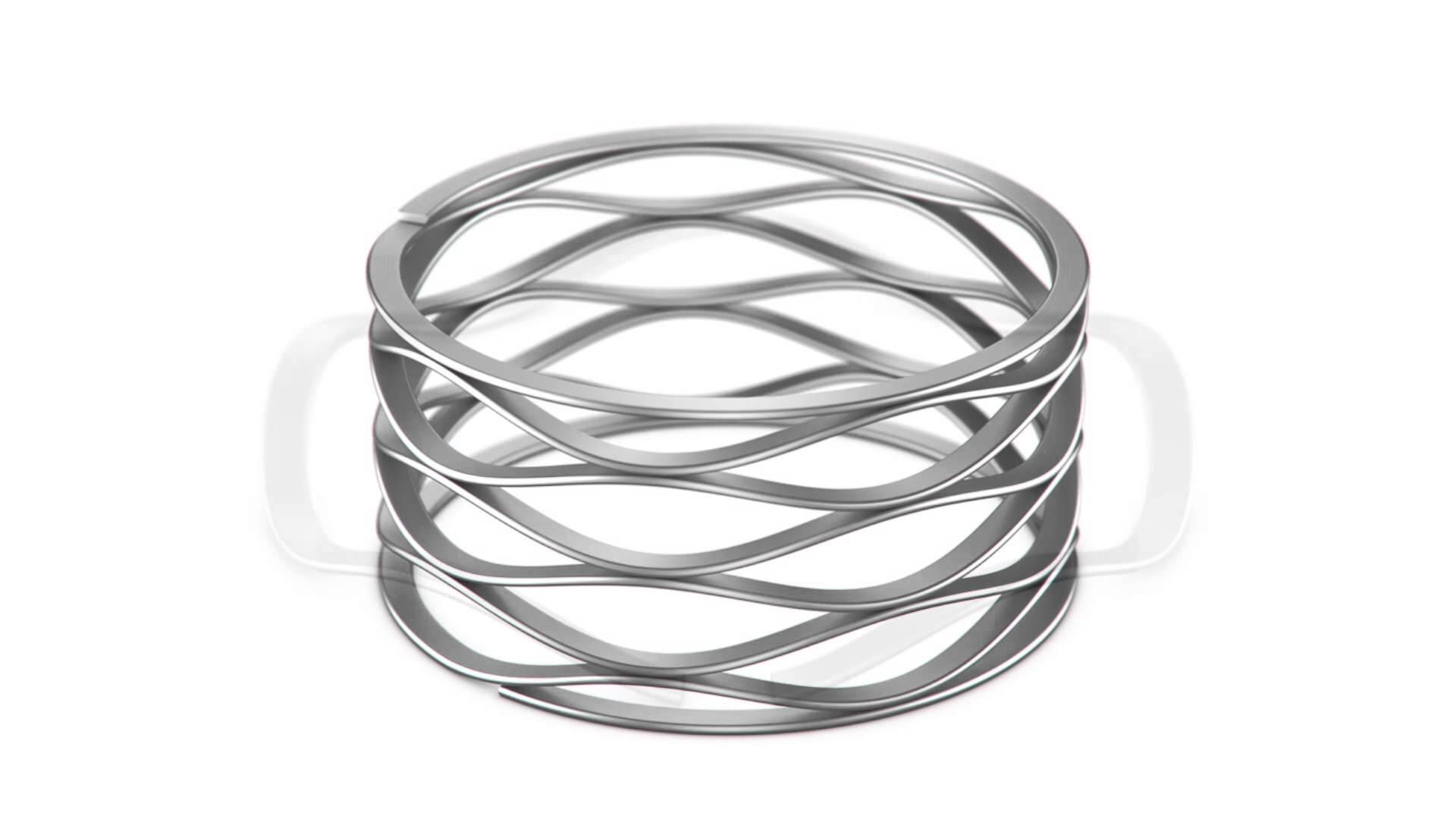Springs are flexible mechanical components to store and release energy or apply and release forces on machine axes. Wave springs combine flat (non-coiled) bow springs (as their waves) with traditional compression-spring coil geometry. For the design’s compactness (as a high force-to-work height ratio) and other benefits, some motion systems have migrated from traditional helical or coil springs to flat-wire wave springs.
Design engineers typically work with manufacturers to customize wave springs to specific operating conditions by material, thickness, number of turns, and other geometric features. That helps address or avoid the following spring-installation challenges.

Wave springs outperform other springs under the application of normal (non-twisting) forces. Data courtesy P. Ravinder Reddy and V. Mukesh Reddy
Column buckling in springs occurs with long free lengths and spring ends that can’t evenly distribute load around the spring circumference. Buckling mainly depends on geometry and not spring material properties. Traditional springs tend to buckle when deflection (for a set free length) is excessive. Such buckling is preventable by keeping the design to below critical deflection and length values. The former is the ratio of deflection to spring free length; critical length is the ratio of that length to the spring diameter. One rule of thumb for avoiding buckling in traditional springs is to keep free length to less than quadruple the spring diameter — and load to less than the product of spring rate, length, and buckling factor.
Wave-spring buckling factors vary greatly, but the value is nearly always higher than those of other springs. That means they readily hold their centered cylindrical shape and often self-locate into assembly bores — even operating reliably in machined assembly features held to relatively loose tolerances.

Spring surge is a potential concern in assemblies with a compression spring having one free end. Depending on the motion input, such springs can exhibit resonance that’s large enough to cause temporary loss of contact with the assembly housing — and damage surrounding machine elements. That’s an issue of highest concern if the spring material provides little damping and the spring operates on an axis that must make fast reciprocating strokes. Well-chosen wave-spring geometry and material can help avoid issues of spring surge and resonance excitation.
Mean, cycling, and localized stresses on the spring each load cycle (and the load cycle itself) dictate when spring fatigue failure could occur. For any spring design, more turns make for a longer MTBF … while longer springs generally have shorter MTBF. But no matter the variation, wave springs fatigue more slowly and have longer MTBF than traditional springs.
Springs under normal operation exhibit no permanent spring-rate or dimensional changes — called relaxation or set. But deflection under full load with stresses exceeding the spring material’s yield strength will induce permanent deformation that compromises the spring ability to deliver full design force or energy. This is often a concern in designs that must operate in extremely hot ambient conditions. Wave-spring deflection is about 25% lower than that exhibited by traditional springs. Wave springs are also more resistant to relaxation for comparable diameters, free lengths, and turns. One caveat: In designs necessitating fewer turns and shorter free lengths, sometimes traditional compression springs outperform wave springs by exhibiting less deformation.
Any spring under a twisting moment load exhibits shear stress and stores strain energy. Wave springs exhibit less strain energy than traditional spring variations (and lower equivalent stress values) so better withstand such loading.
Filed Under: Motion Control Tips





Tell Us What You Think!